Sodium-ion batteries
Sodium-ion batteries: the revolution in renewable energy storage
R&D Energy efficiency Energy storage
Efficient energy storage is a key pillar of the energy transition. In a context of accelerating decarbonisation, manufacturers are increasingly turning to sodium batteries, a cheaper alternative to the popular lithium batteries. This technology opens the door to the massification of affordable electric cars and the efficient storage of renewable energy. But how do they work and what are their advantages?
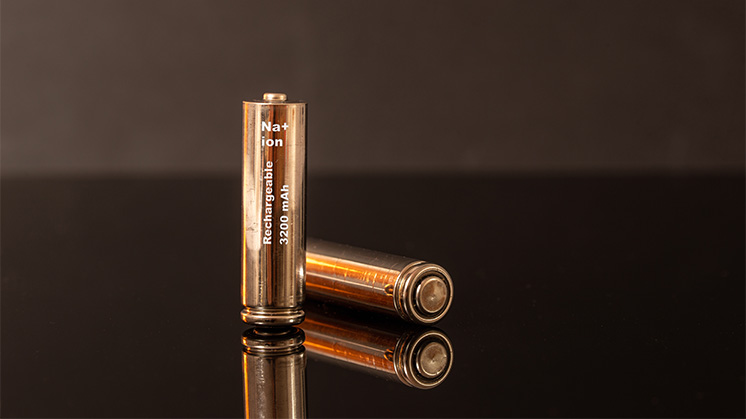
Sodium-ion batteries are a type of rechargeable batteries that carry the charge using sodium ions (Na+).
The development of new generation batteries is a determining factor in the future of energy storage, which is key to decarbonisation and the energy transition in the face of the challenges of climate change. Storing renewable energy makes renewable energy production more flexible and ensures its integration into the system.
Since their emergence in 1991, lithium batteries have dominated the energy storage sector. However, this leadership has led to a significant increase in demand for the mineral, a demand that does not seem to be diminishing. As a result, the potential for lithium supply shortages, with consequent price rises and delays due to lack of supply, has come to the fore.
In recent years, battery manufacturers and the automotive industry have been exploring alternative raw materials to lithium for the manufacture of energy storage systems. And one of the most viable options is the sodium-ion battery: the relative abundance of this mineral and its low cost position it as the next revolution in renewable energy storage.
What are sodium-ion batteries and how do they work?
Sodium-ion batteries are a type of rechargeable battery that work in a similar way to lithium batteries, but carry the charge using sodium ions (Na+) instead of lithium ions (Li+). Sodium is a silvery, soft alkaline metal that is very abundant in nature - it can be found, for example, in sea salt or in the earth's crust. The operation of sodium-ion batteries is very similar to that of lithium-ion batteries, as the chemistry of the two elements is similar (both are alkaline).
Sodium batteries were first studied in the 1980s, but it was not until the 21st century that the true potential of sodium for energy storage was rediscovered.
Over the last 20 years, more than 50 % of the patented research activity in the field of sodium-ion batteries has taken place in China (53 %), followed by Japan (16 %) and the US (13 %). Europe, too, is starting to make progress in this field. The companies that are currently playing the most important role in this technology are the Chinese companies CATL or HiNa.
The future is bright in this respect. According to BloombergNEF, by 2030, sodium-ion batteries could account for 23% of the stationary storage market, which would translate into more than 50 GWh. But that forecast could be exceeded if technology improvements accelerate and manufacturing advances are made using similar or the same equipment as for lithium batteries.
Sodium-ion battery technology
Sodium-ion batteries are composed of the following elements: a negative electrode or anode from which electrons are released and a positive electrode or cathode that receives them. When the battery is discharged, sodium ions move from the anode to the cathode through an electrolyte - a substance composed of free ions that functions as an electrical conductor - resulting in the potential difference that produces the current. When the battery is charged, the sodium ions return to the anode until a predetermined end-of-charge voltage is reached.
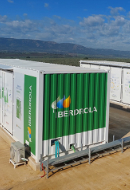
Battery sizes
Their importance and their influence on performance.
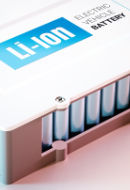
Lithium-ion batteries
Essential for energy storage.
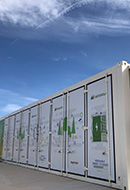
BESS Battery
What are battery energy storage systems?
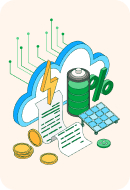
Virtual batteries
A sustainable alternative to save, drive and secure the consumption of energy.
Ion batteries
Differences between sodium-ion and lithium-ion batteries
-
Sodium batteries
-
Lithium batteries
-
Sodium batteries
-
Lithium batteries


Source: Blackridge Research & Consulting and CIC EnergiGUNE.
 SEE INFOGRAPHIC: Ion batteries [PDF]
SEE INFOGRAPHIC: Ion batteries [PDF]
Manufacture of sodium-ion batteries
Sodium batteries are currently more expensive to manufacture than lithium batteries due to low volumes and the lack of a developed supply chain, but have the potential to be much cheaper in the future. To achieve this, GWh production capacities must be reached.
In terms of manufacturing, most of today's sodium-ion technologies use the same processes as lithium batteries, which is a very significant advantage over other storage technologies under development. Sodium technology therefore benefits from all the economies of scale and knowledge from lithium (retrofitting an existing lithium plant to sodium-ion technology could require only 10 % additional capital expenditure).
Sodium-ion battery applications
Research suggests that sodium-ion batteries will be able to meet the growing demands for energy storage in a sustainable way. Some of the known applications of sodium batteries are:
![]() Renewable energy storage
Renewable energy storage
In a world in transition from fossil fuels to renewable energy sources such as wind and solar power, improved electricity storage is of vital importance. Sodium-ion batteries make it possible to store renewable energy for homes and businesses, ensuring a balanced supply of every green megawatt generated. One of the main applications in the energy industry is self-consumption.
![]() Storage in the grid
Storage in the grid
Smart grids depend on stable power, as intermittent power can cause grid failures. Sodium-ion batteries can offer greater stability to the power supply.
![]() Energy support for data and telecoms companies
Energy support for data and telecoms companies
The data and telecommunications sectors have infrastructures and processes that rely heavily on energy storage. Sodium batteries can provide power on demand to ensure a stable and secure energy supply.
![]() Automobiles and Transport
Automobiles and Transport
Reducing carbon emissions from transport is a key pillar of the energy transition. Sodium ion technology is an increasingly real alternative for electric mobility.
![]() Industrial mobility
Industrial mobility
Sodium-ion batteries can maximise asset utilisation in industry and minimise operating costs.
The future of sodium ion technology
The lithium battery research activity driven in recent years has benefited the development of sodium-ion batteries. By maintaining a number of similarities with lithium-ion batteries, this type of energy storage has seen particularly rapid progress and promises to be a key advantage in their deployment.
But, in addition, the growing demand for large-scale electrical energy storage and recent discoveries - for example, the use of hard carbon as an anode material - are leading to the increasing development of sodium-ion batteries.
Its major challenges open up three main lines of technological improvement:
- Increased energy density to improve energy storage.
- Drive high cyclability cells (fast charging, frequency regulation, regenerative braking in electric vehicles).
- Hybridisation with lithium batteries. Some manufacturers are developing hybrid packs for electric vehicles that combine lithium cells (energy reserve) with sodium cells (better fast charging performance).
Once achieved, the next goal will be to commercialise this technology at low cost and on a large scale. This is just the beginning of a journey that lays the foundation for a major revolution in renewable energy storage.




